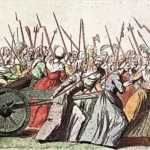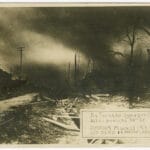Joplin Tornado: Honoring the 161 Lives Lost & the City’s Unbreakable Spirit
Unveiling the Unfathomable: The Human Toll of the Joplin Tornado
In the wake of the devastating Joplin tornado, the world grappled with the immense loss of life. While the instinct to seek information about the tragic event is understandable, it’s crucial to approach the topic with empathy and respect for the victims and their families. This article honors the 161 souls lost on May 22, 2011, and examines the factors that contributed to the disaster’s devastating impact.
A Community Forever Changed
The images of the Joplin tornado’s aftermath are forever etched in our collective memory. The sheer force of the storm, an EF5 on the Enhanced Fujita scale, carved a path of destruction through the heart of the city, leaving behind a landscape almost unrecognizable. Homes were reduced to rubble, businesses vanished, and the lives of countless families were irrevocably altered.
The human cost of this tragedy is immeasurable. Each of the 161 individuals who lost their lives had loved ones, dreams, and aspirations. Their absence continues to be felt deeply within the community and beyond.
Honoring the Victims, Preserving Their Memory
The process of healing and rebuilding after such a devastating event is a long and arduous journey. Joplin has chosen to face this challenge head-on, demonstrating remarkable resilience and compassion.
Memorials and commemorative events play a vital role in preserving the memory of those lost. These spaces offer a place for reflection, remembrance, and a chance for the community to come together and support one another.
Lessons Learned, Hope for the Future
The Joplin tornado serves as a stark reminder of the importance of disaster preparedness. In the wake of this tragedy, communities across the country have re-evaluated their emergency response plans, emphasizing the need for early warning systems, sturdy shelters, and comprehensive disaster drills.
Out of the ruins, Joplin has rebuilt, embodying the indomitable spirit of humanity. While the scars of the tornado may remain, they serve as a testament to the city’s resilience and determination to move forward. Joplin stands as a beacon of hope, reminding us that even in the face of unimaginable loss, the human spirit can endure and emerge stronger than ever before.
What Happens to a Human Body in a Tornado?
Tornadoes are capable of inflicting a wide range of injuries, from blunt force trauma and lacerations caused by flying debris to fatal internal injuries due to extreme pressure changes. The human body is no match for the immense power of a tornado, with winds exceeding 200 mph capable of turning everyday objects into deadly projectiles and hurling people through the air.
Here’s a closer look at the types of injuries tornadoes can inflict:
- Blunt Force Trauma: This is the most common type of tornado-related injury and occurs when a person is struck by debris, thrown against a solid object, or involved in a structural collapse. Injuries range from cuts and bruises to broken bones, internal bleeding, and traumatic brain injuries.
- Lacerations and Penetrating Injuries: Flying debris, such as glass, wood, and metal fragments, can become deadly projectiles in a tornado, causing severe cuts and impalement injuries.
- Head Injuries: Head injuries are a leading cause of death in tornadoes. The rapid acceleration and impact forces can cause skull fractures, concussions, and other forms of traumatic brain injuries.
- Crush Injuries: When buildings collapse or heavy debris falls on individuals, crush injuries can occur. These injuries can range from broken bones to severe organ damage and compartment syndrome.
- Barotrauma: The rapid pressure changes that occur within a tornado can cause barotrauma, affecting the ears, sinuses, and lungs. Severe cases can lead to lung collapse, eardrum rupture, and even air embolisms.
The physical wounds may heal, but the psychological trauma endured by tornado survivors can last a lifetime, often manifesting as PTSD, anxiety, and survivor’s guilt.
Why Were So Many People Killed in the Joplin Tornado?
The Joplin tornado’s staggering death toll wasn’t just about its intensity (EF-5), but a confluence of factors, including building practices, warning response, and the storm’s unusual trajectory through a densely populated area.
- EF-5 Intensity and Unusual Trajectory: The Joplin tornado was the most powerful classification on the Enhanced Fujita scale, with winds exceeding 200 mph. Unlike many tornadoes that track through rural areas, the Joplin tornado carved a path directly through the heart of the city, maximizing its impact on populated areas.
- Building Practices and Infrastructure: The Joplin Globe reported that 54% of fatalities occurred in residences. Many homes lacked basements or reinforced safe rooms, leaving occupants highly vulnerable. Pre-tornado building codes in Joplin did not universally mandate hurricane ties or other wind-resistant features, leaving many structures susceptible to complete destruction.
- Human Factors and Warning Response: Joplin had a functioning siren system, and residents did receive warnings approximately 20 minutes prior to impact. However, the lead time and effectiveness of communication in prompting immediate action are debated. Joplin’s location in “Tornado Alley” meant frequent warnings, potentially leading to complacency or a delayed response, even in the face of a confirmed, violent tornado.
Did They Know the Joplin Tornado Was Coming?
Joplin DID have a siren system and warning procedures in place. Warnings were issued approximately 20 minutes before the tornado touched down. However, the storm’s rapid intensification, unusual “wedge” shape, and a possible “cry wolf” effect from past warnings may have contributed to delayed reactions.
- Conflicting Information and Normalcy Bias: Some residents received conflicting reports about the tornado’s path. Additionally, “normalcy bias,” a psychological phenomenon where people tend to underestimate the likelihood of a disaster, may have played a role in delayed reactions.
- Lack of Visual Cues: The tornado’s wedge shape and the time of day may have made it difficult for some residents to visually identify the threat until it was too late.
Joplin’s Legacy: A Catalyst for Change
The Joplin tornado became a catalyst for change, spurring stricter building codes emphasizing hurricane ties and safe shelters, potentially saving lives in future events across tornado-prone regions. The city’s recovery showcases the power of community in the face of tragedy. Meteorologists and engineers continue to study the Joplin tornado to improve warning systems, building practices, and communication strategies to mitigate the impact of future events.
The Joplin tornado serves as a stark reminder that while tornadoes are powerful, survival is possible by taking proper precautions. Heeding warnings, seeking appropriate shelter immediately, and understanding the risks associated with severe weather are crucial for protecting lives.
If you are interested in seeing the former residence of cocaine ‘queen’ Griselda Blanco, you can visit the monument in her honor, more commonly called Griselda Blanco house Miami. Likewise, if you want to take a tour of the world’s oldest archeological site, you should look up Göbeklitepe pictures to inspire your travels.
- Unveiling the Enigma: Mansoureh Khojasteh Bagherzadeh’s Public Appearances & Private Life in Iran - July 18, 2025
- Unveiling the Mystery: Mansoureh Khojasteh Bagherzadeh’s Husband: A Rare Glimpse into a Private Life - July 18, 2025
- Unveiling Masoud Khamenei’s Mother: Power, Influence, and Iran’s Future - July 18, 2025
















